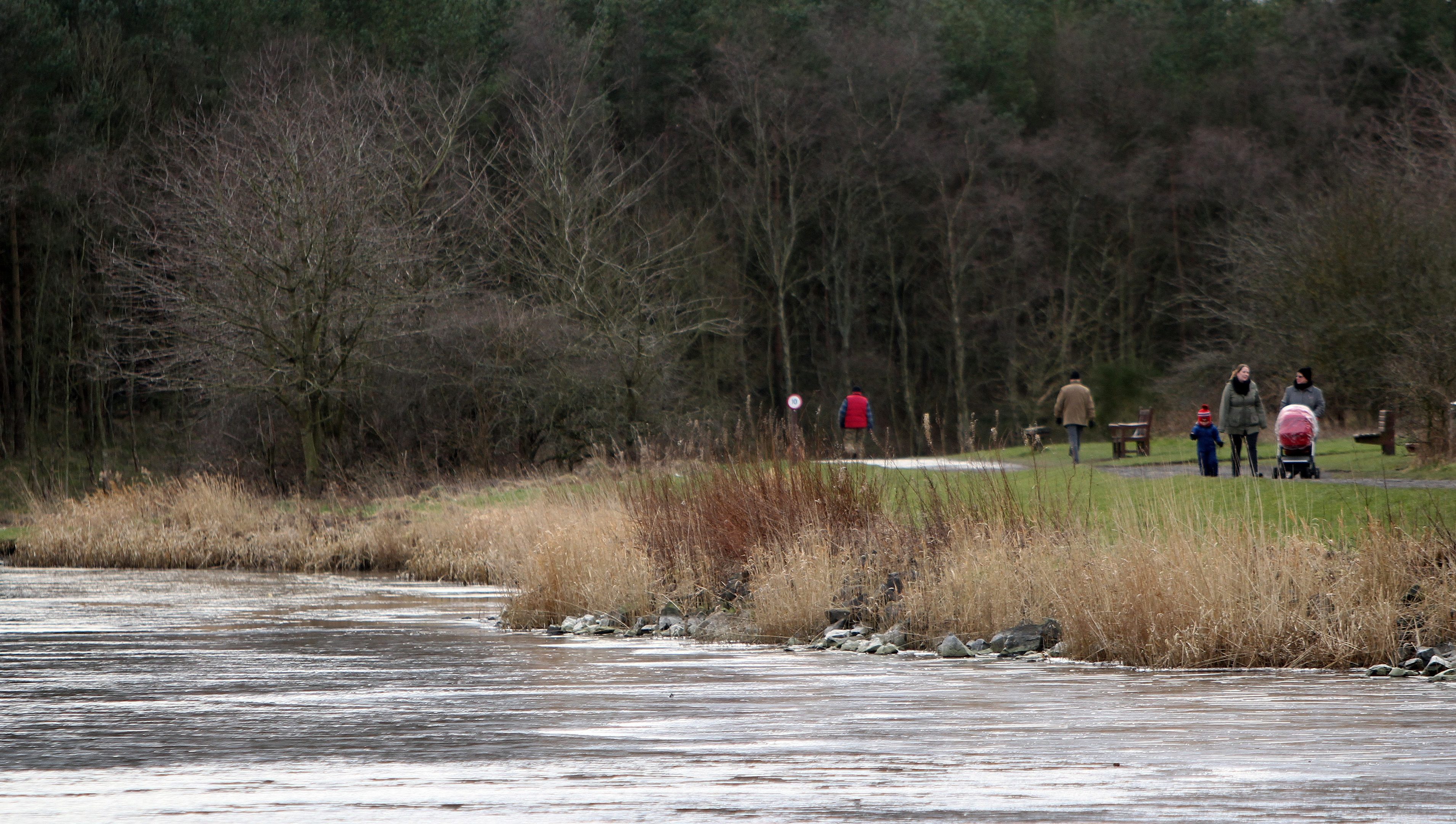NHS Fife has warned people to be on the lookout for potentially hazardous blue-green algae in waterways as summer arrives.
Blue-green algae are tiny organisms which develop naturally in lochs, ponds, reservoirs, rivers and in the sea.
They are a common seasonal occurrence and waters which have been hit by agricultural, domestic or industrial discharges are most at risk of developing the algae.
In still waters, the algae can multiply during the summer to such an extent that they discolour the water making it appear green, blue-green or greenish brown.
Shoreline mats of blue-green algae may appear and are usually coloured brown to black.
Sometimes a scum may form on the surface of the water, appearing in different places at different times, but most commonly found near the shoreline.
People and animals can both be affected as a result of direct contact with water affected by blue-green algae and NHS Fife is advising the public, especially people undertaking water sports, anglers and dog owners, to be alert to the blooms as temperatures rise.
NHS Fife director of public health Dr Margaret Hannah said: “Canoeists, wind surfers and swimmers who come into contact with the algal scum or who accidentally swallow affected water can suffer from complaints such as skin rashes, eye irritation, vomiting, diarrhoea, or pains in muscles and joints.
“These symptoms are usually mild, but in some cases, can be severe and so you should contact your GP if these develop.
“The risk to small animals like dogs is significant over the summer months as they tend to drink more water in the heat and may eat shoreline algal crusts.
“Dog owners should keep an eye on their pets, especially if they come into contact with water which could be affected.
“Fish caught in waters affected by blue-green algae should not be eaten and should not be fed to pets.”
Public water supplies are monitored and treated to prevent harmful effects to health due to the algae.
Where monitoring reveals higher than acceptable levels of algal bloom, warning notices will be posted at the affected waterways.
Anyone who finds a loch, pond or river which they suspect is affected by blue-green algae and which is not displaying a warning sign, should contact their local environmental health service.
For further information or to report blue-green algae visit www.fifedirect.org.uk or phone Fife Council on 03451 550022.
Problem spots
The Fife watercourses which are being monitored for blue-green algal blooms this summer are:
Stenhouse reservoir, Cowdenbeath community woodland ponds, Clatto reservoir, Craigtoun Park ponds, Tayport common pond, Tarvit pond, Peppermill dam, Keir dam, Roscobie reservoir, Belleknowes pond, Raith lake, Beveridge Park, Jamphlars pond, Glenrothes Park pond, Coull reservoir and Stenton pond in Glenrothes, Kinghorn loch, Town loch, Loch Ore, Loch Gelly, Loch Fitty, Lindores loch, Black loch Newburgh, Birnie and Gaddon lochs, Golden loch, Kilconquhar loch, Newton Farm loch in Wormit, Moor loch, Black Loch near Dunfermline, Tollie Hill loch, Otterston loch, Dunearn loch, Silverbarton Hill and Camilla loch.
